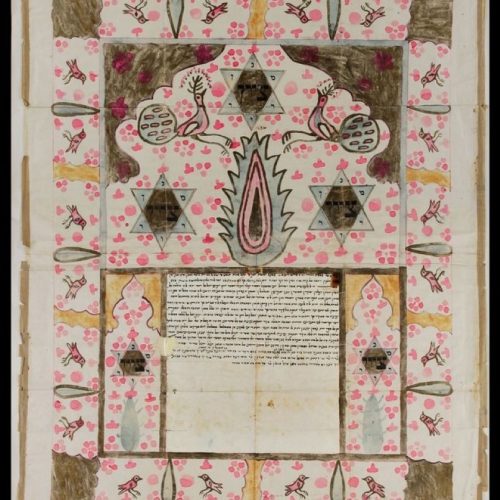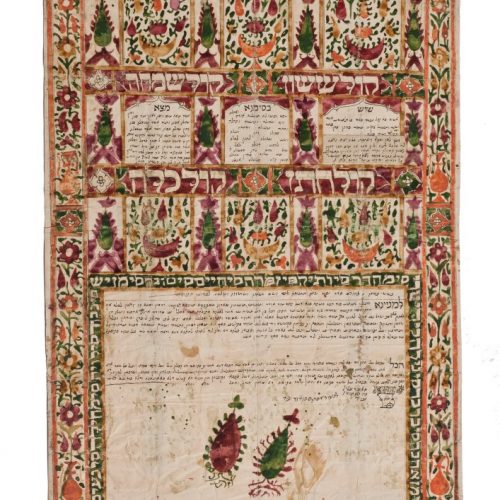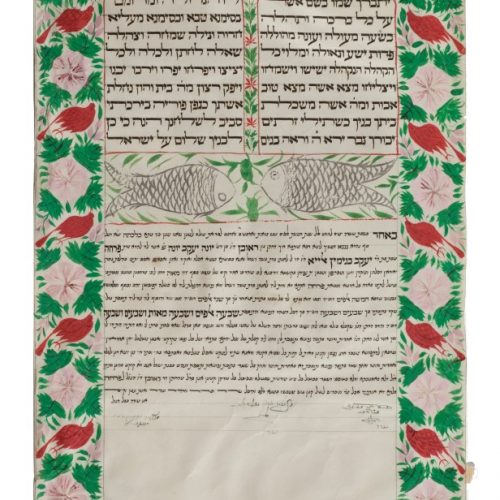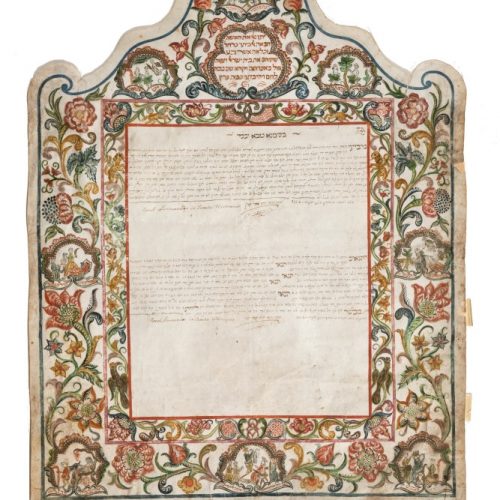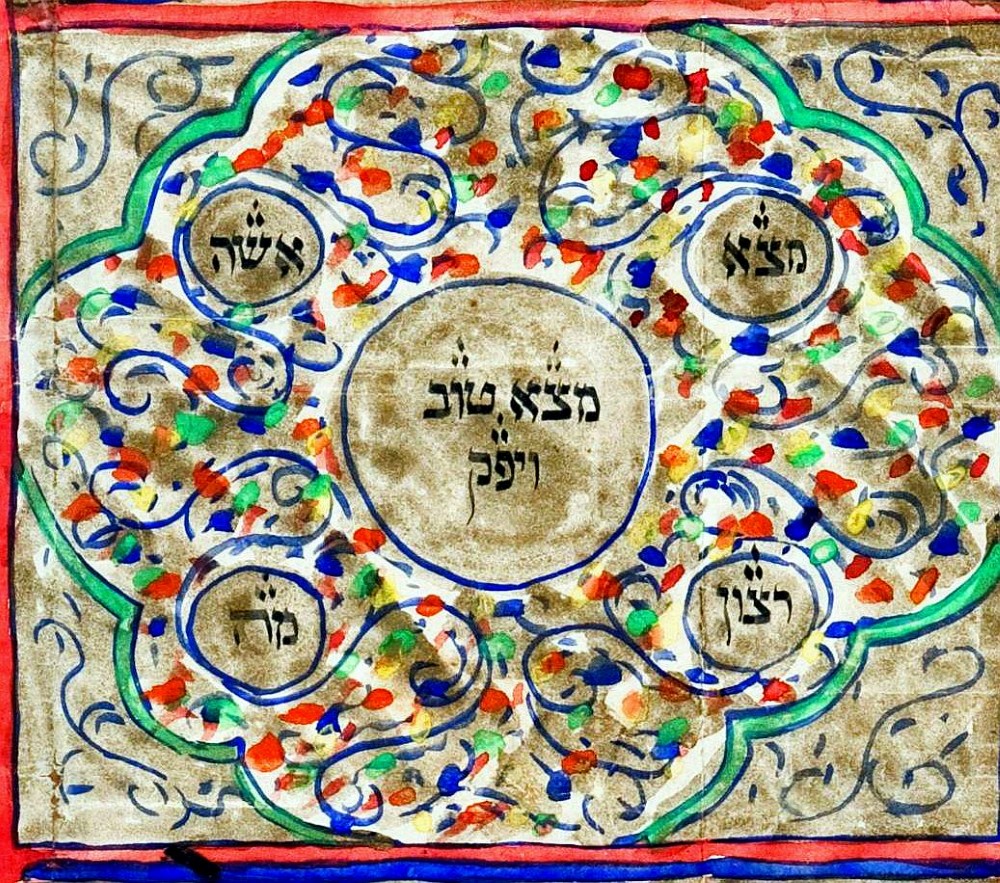
Here is Your Ketubbah presents some of the finest ketubbot from the collection of the Museum of Art, Ein Harod. These beautifully illuminated marriage contracts were created for couples living in Italy, Afghanistan, Iran and India during the 16-20th centuries.
The ketubbah is a legal document outlining the duties owed by the groom to his bride, and its text has remained virtually unchanged since the dawn of rabbinic Judaism two thousand years ago. The ketubbah was conceived with the aim of protecting wives by spelling out their husbands’ obligations in married life, including the provision of food, clothing, shelter, and conjugal rights; it also guaranteed a financial settlement in case of divorce. Since the ketubbah is a formal contract requiring informed consent by both parties, it was originally composed in Aramaic, the vernacular of Jewish antiquity. This language is still preserved in today’s traditional ketubah. The reading of the ketubbah and its official handing over to the bride take place under the chuppah during the marriage ceremony.
The illustrated ketubbah is a uniquely Jewish artifact. The decorative elements of this essentially legal document articulate aesthetic tastes and social mores developed through centuries of Jewish wandering in the diaspora. Each Jewish community produced ketubbot in its local style, reflecting the artistic traditions of their broader non-Jewish societies.
Here is your Ketubbah bridges between the traditional and historical documents and contemporary issues related to the union of man and wife, above all that of the agunah. According to Jewish law, agunah is an “anchored” or “chained” wife who cannot remarry under Jewish law due to her husband’s refusal to divorce her or because evidence of his death is inconclusive. Andi Arnovitz and Maayan Sharabi have created bridal dresses comprised of duplicates of ketubbot to address this crucial problem of ancient and contemporary Jewish society. They appreciate the beauty and strengths of Jewish law but at the same time highlight its limitations. Ken Goldman’s Fragile – Handle with Care is a glass goblet etched with the words of the ketubbah. This work captures the fragility of the marriage union whose financial clauses enter into force only upon its dissolution.
These works reflect today’s less compromising demands for equality between the sexes. In that, they constitute a contemporary exegetic commentary that acknowledges the rich Jewish heritage but also the uncertainties, contradictions and changing attitudes of modern times regarding the complexity of married life.
Andi Arnovitz, Ma'ayan Sharabi, Ken Goldman
Here is your Ketubbah
Curator: Dvora Liss
November-May 2017


